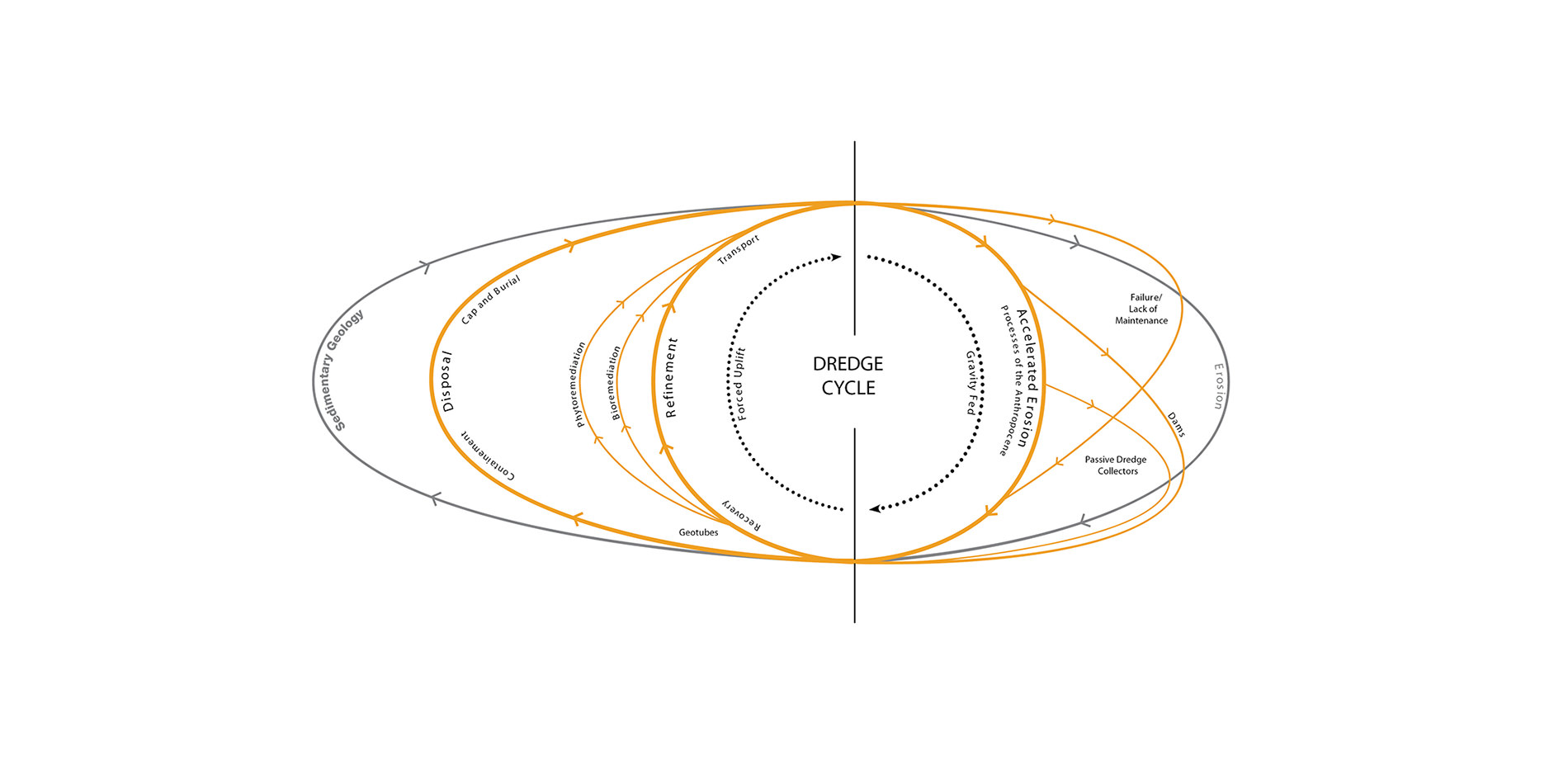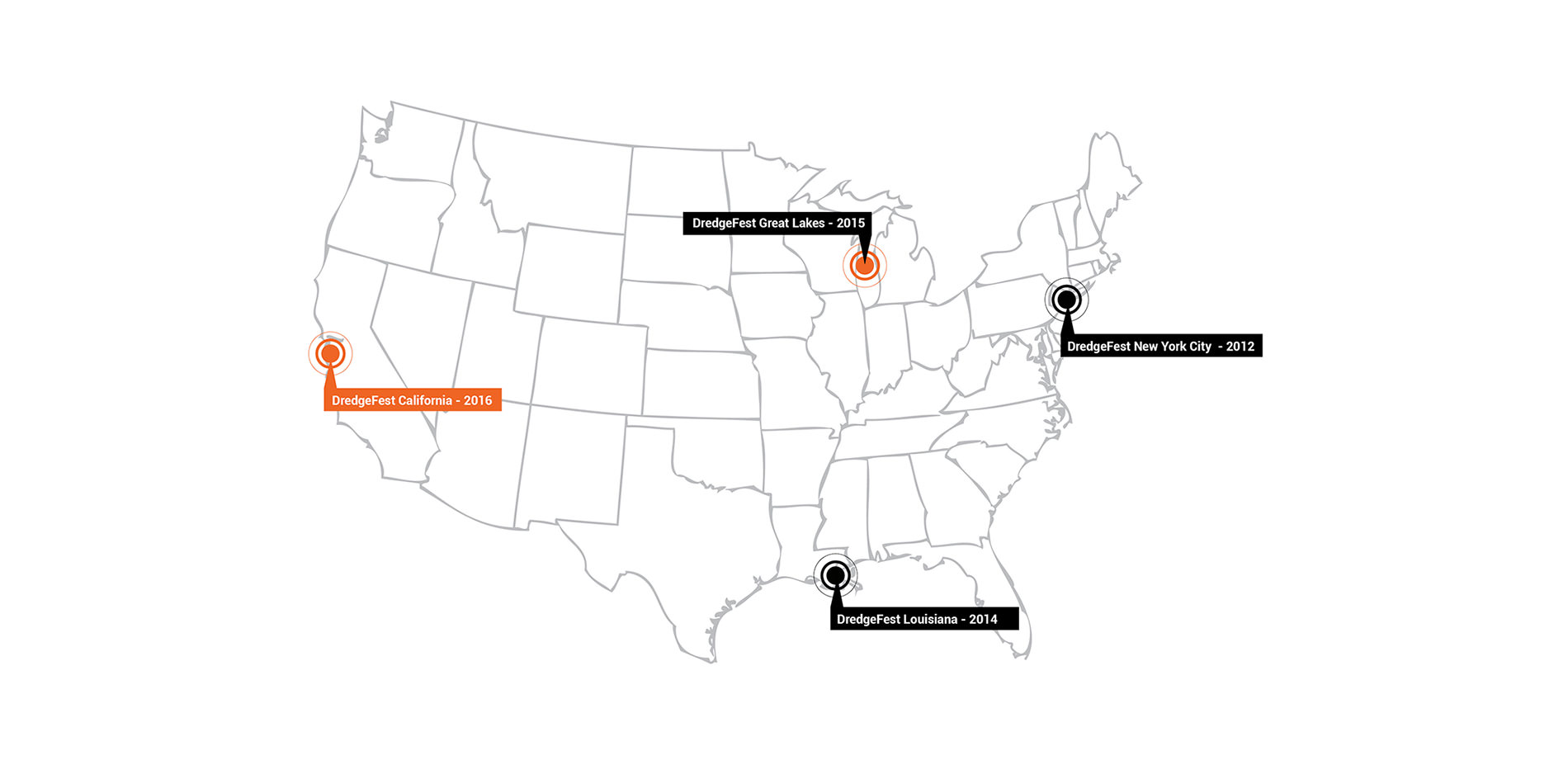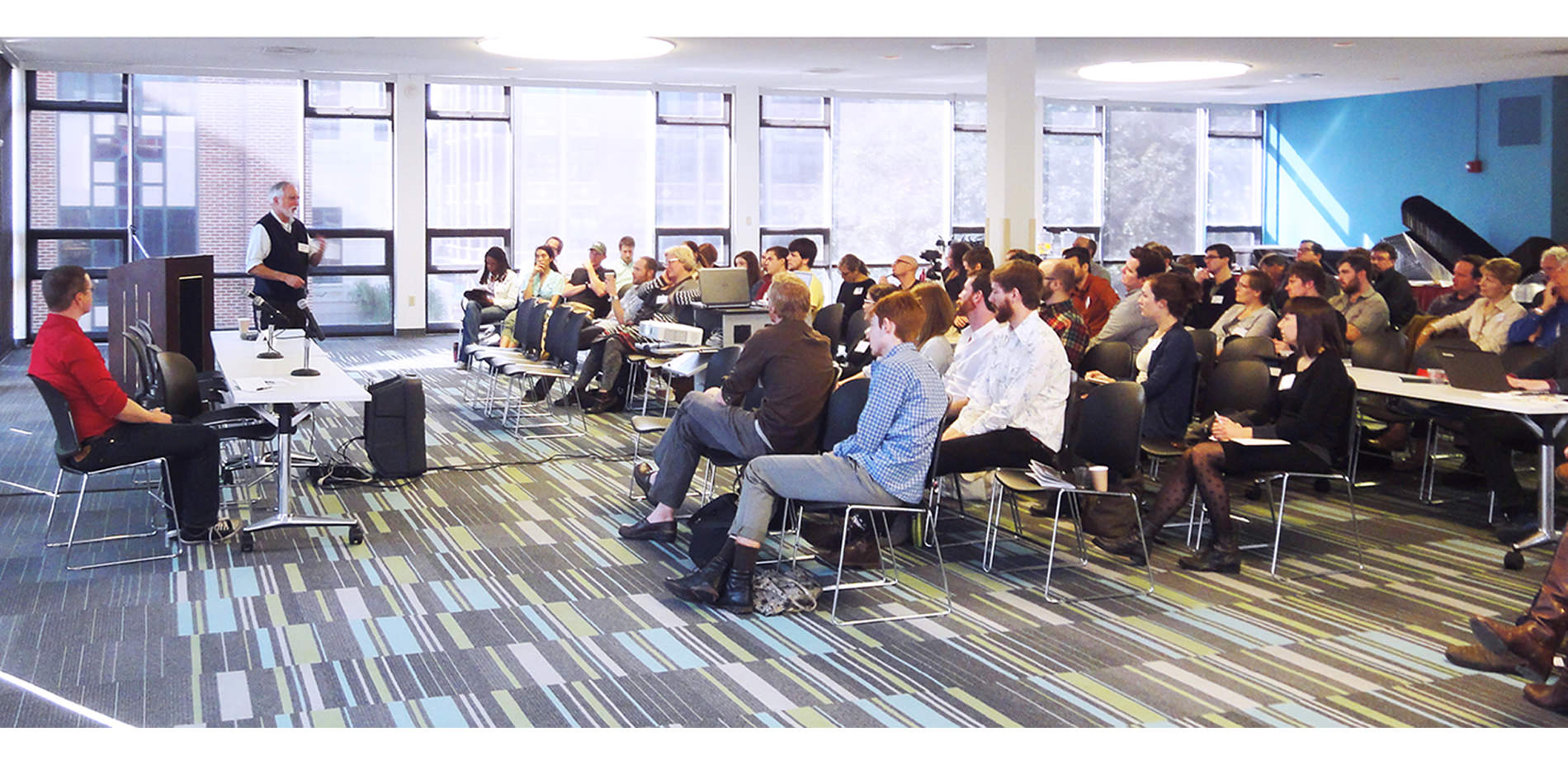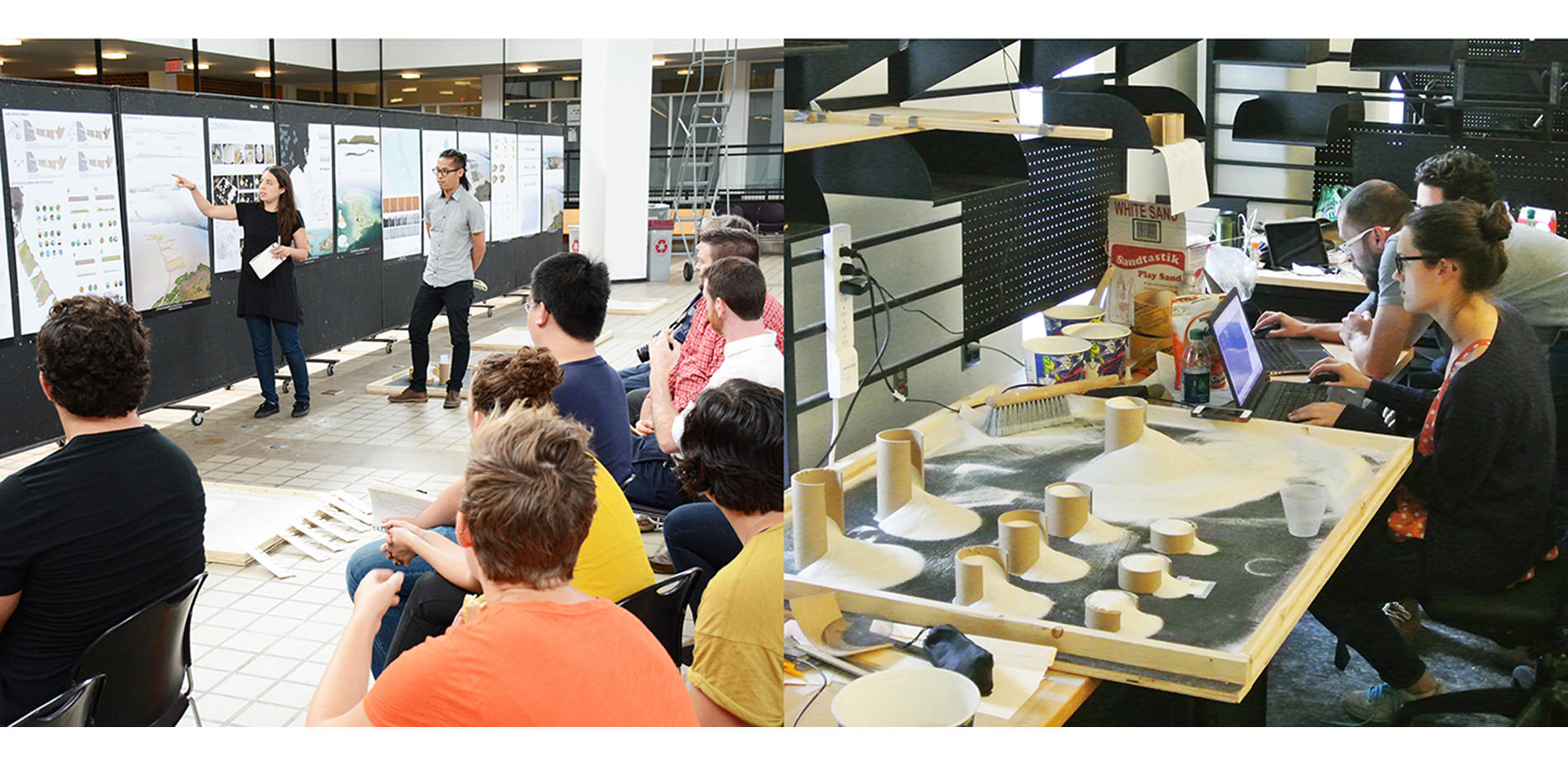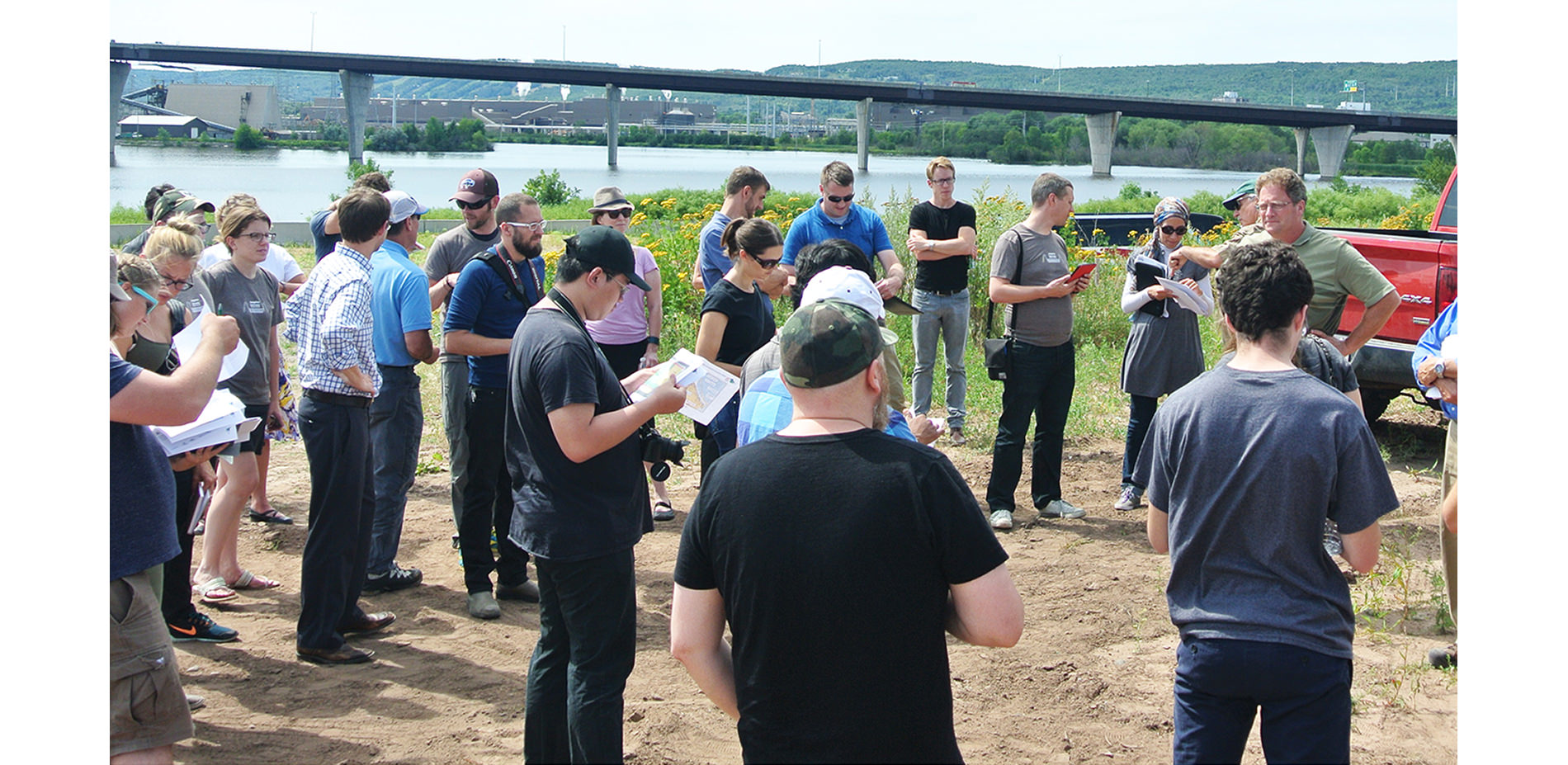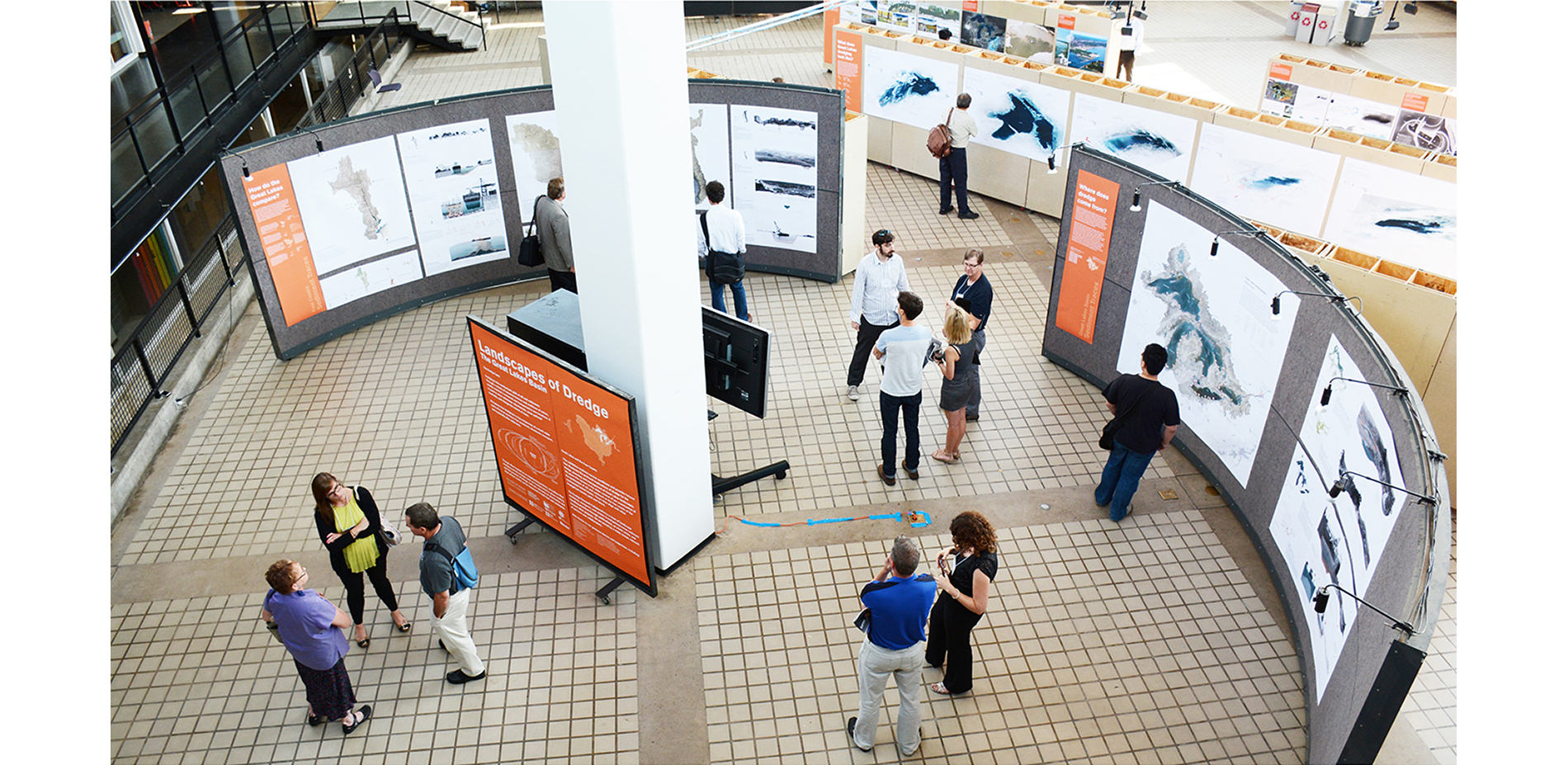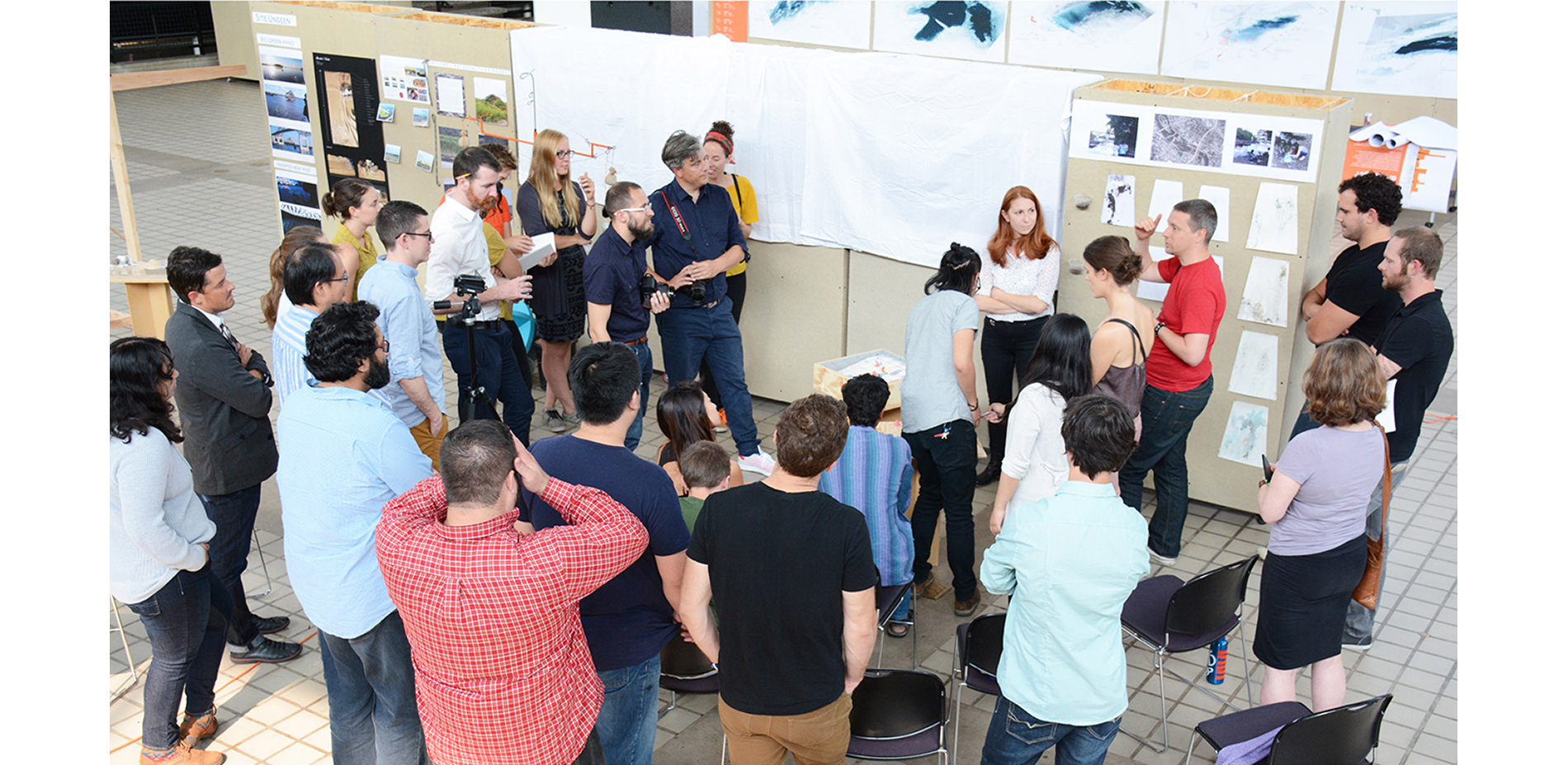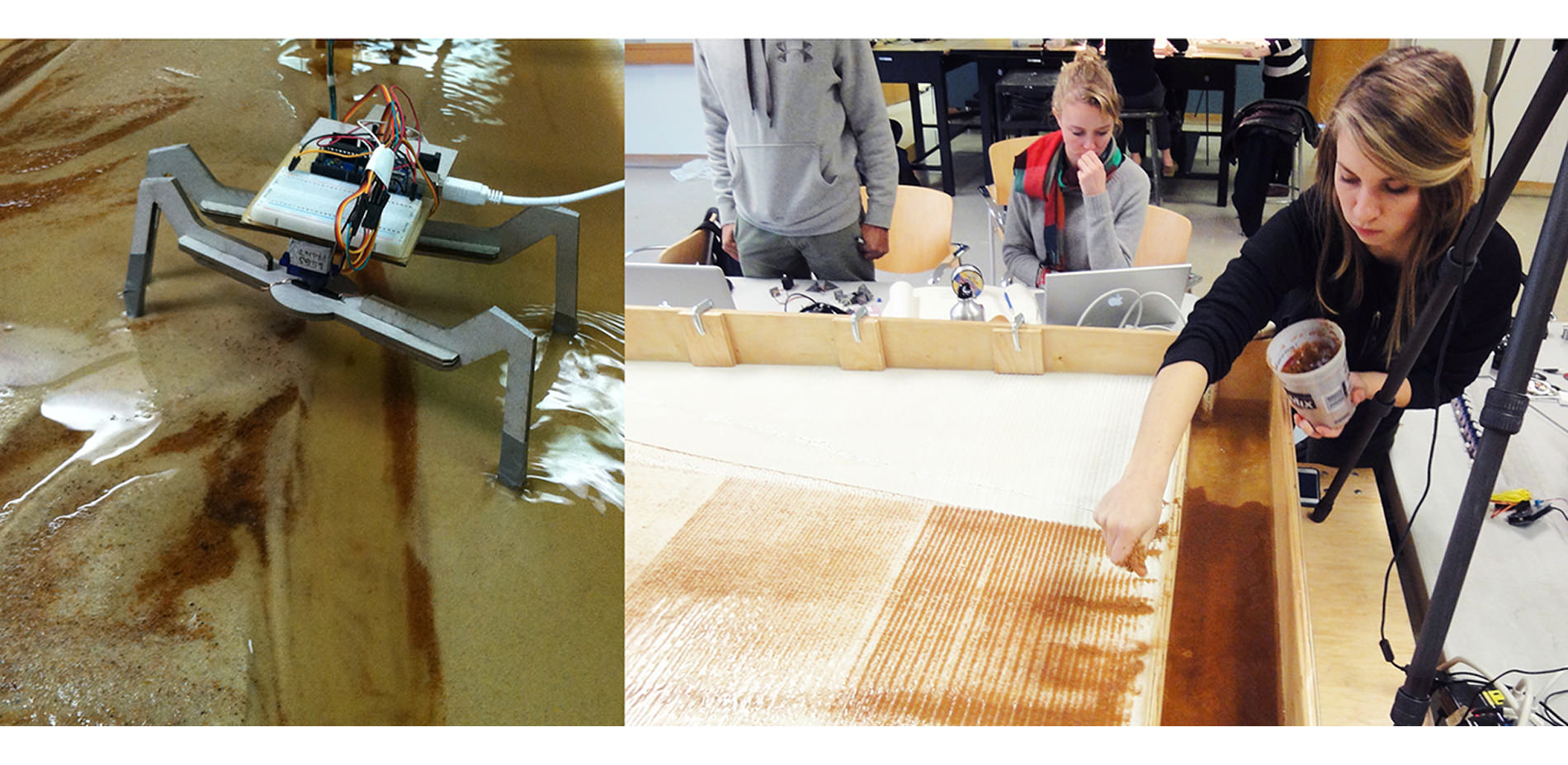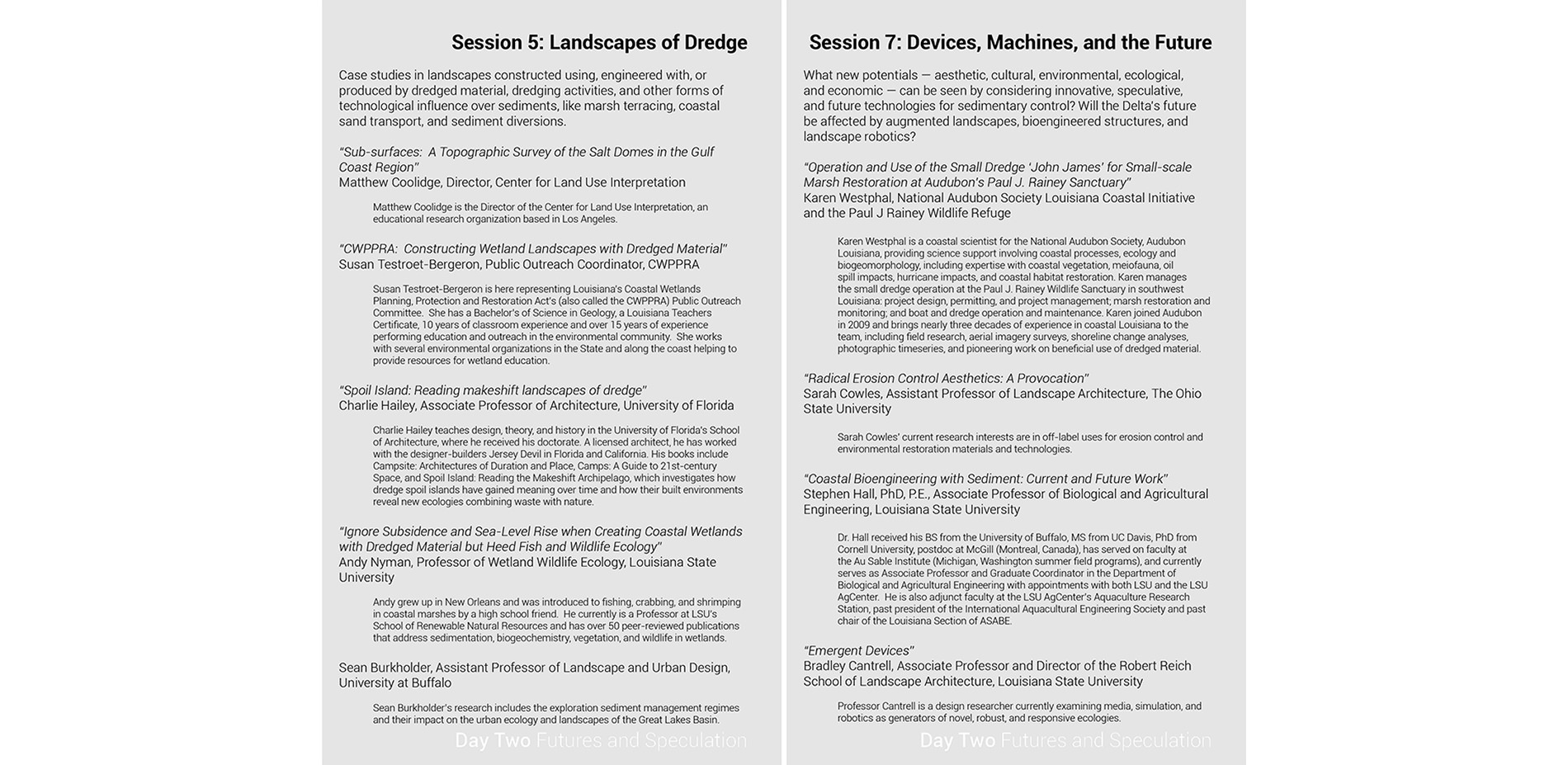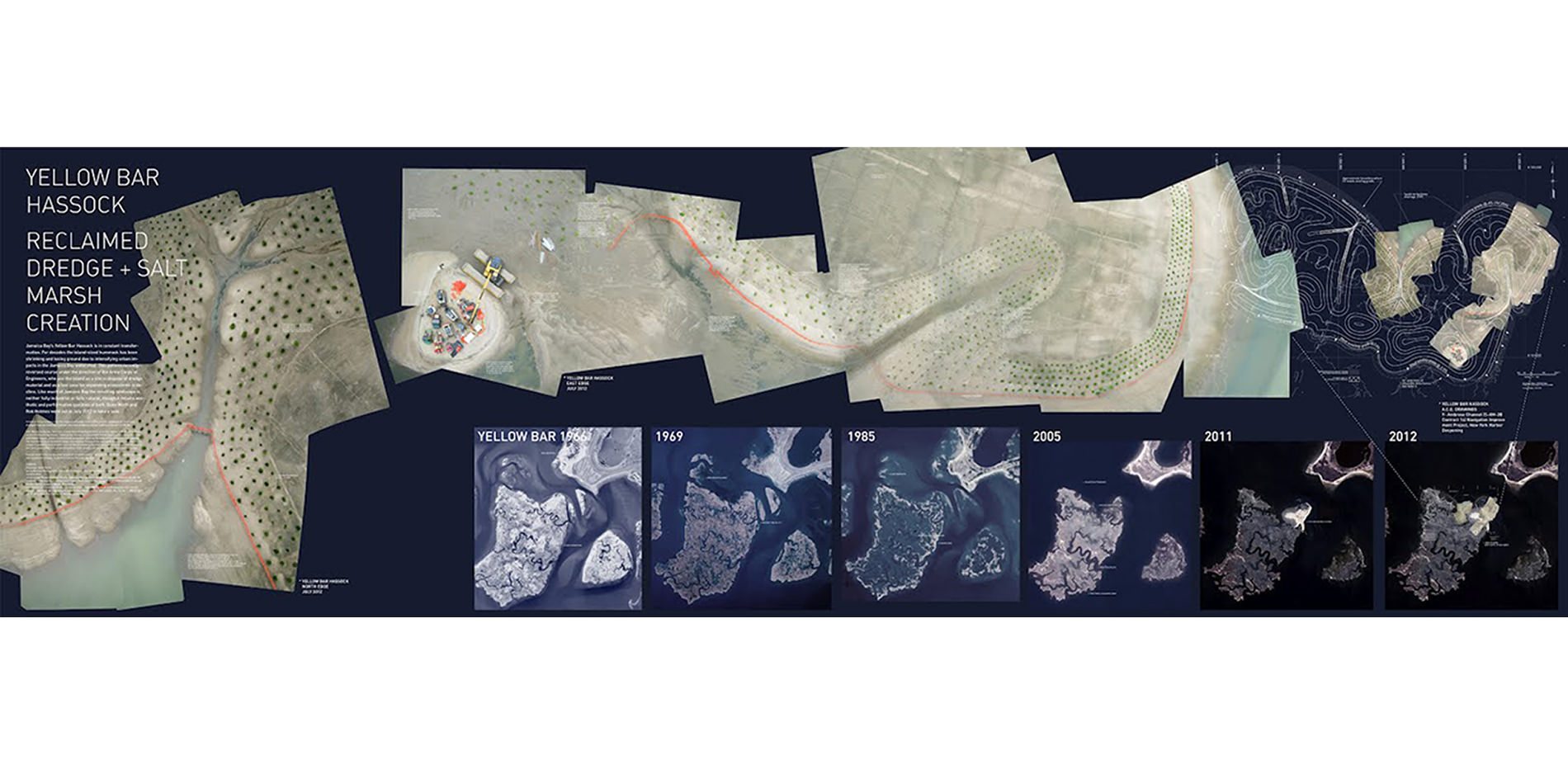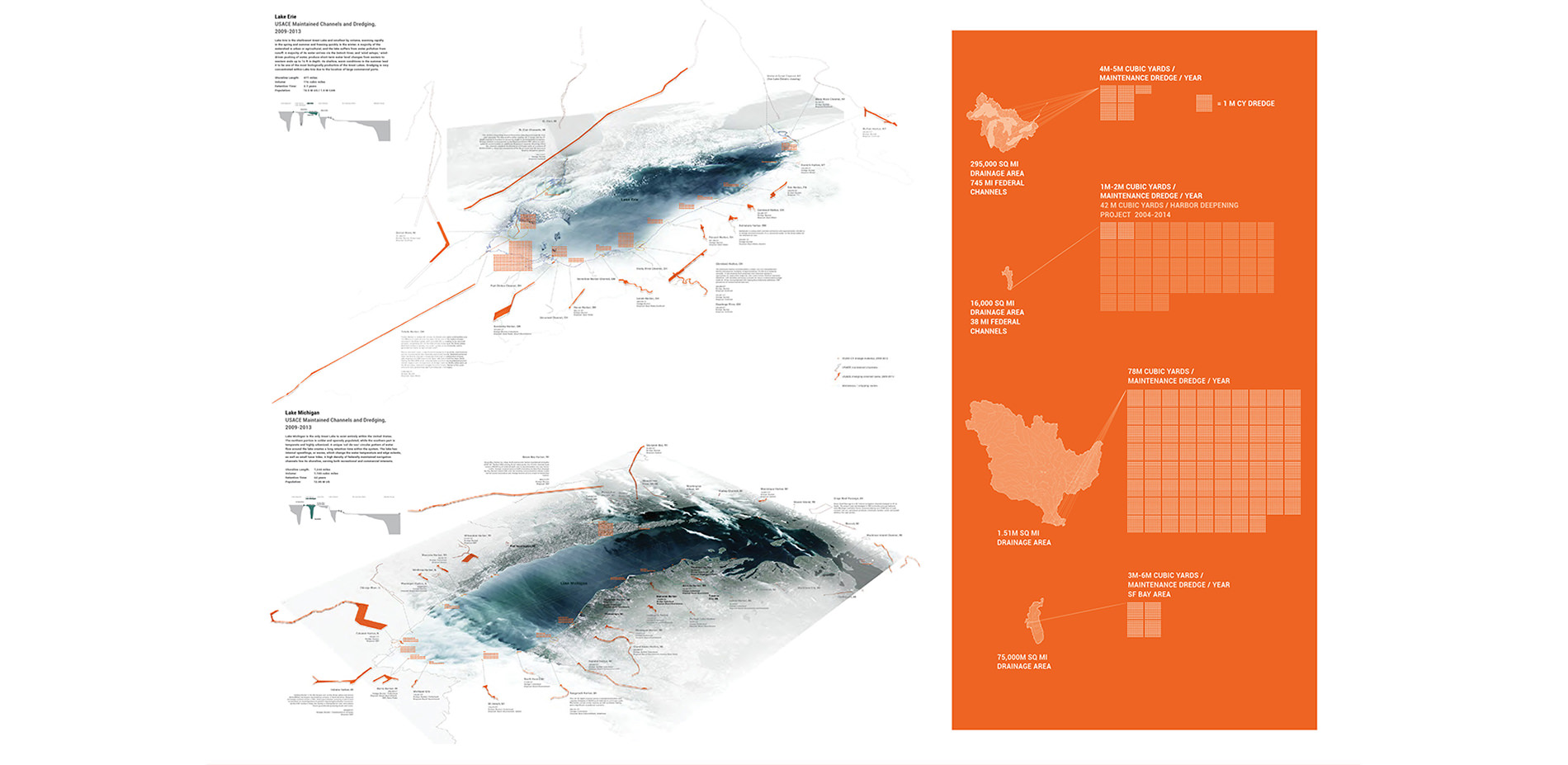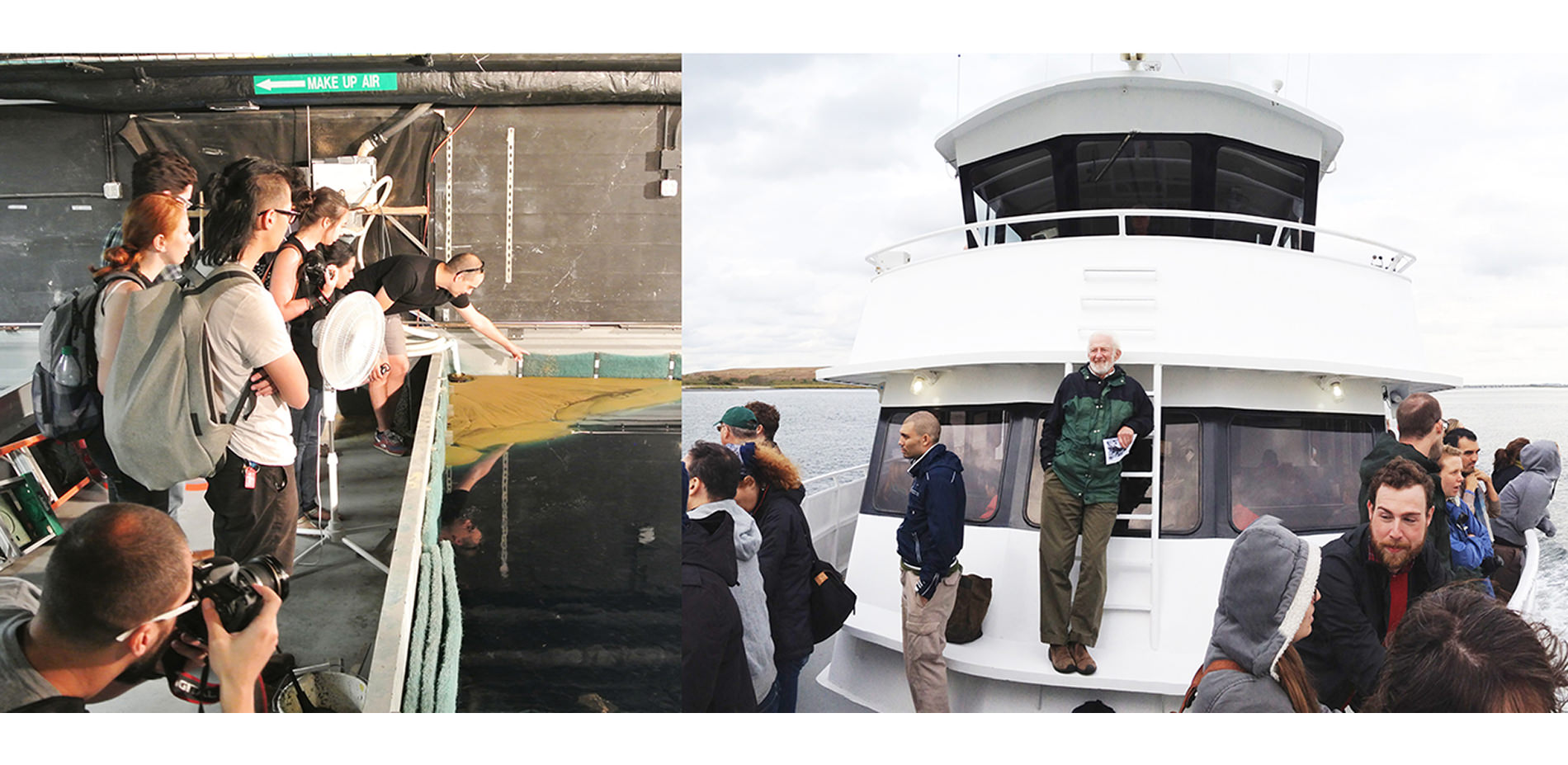PROJECT NARRATIVE
WHY DREDGE?
It's time more people talked about dredge.
The techniques of dredging—and the galaxy of technologies that surround it—constitute perhaps the greatest unrecognized landscape architecture project in the world. Dredge shapes our beaches and waterways, it plays a key role in global shipping networks and in coastal real estate. Silt is scooped from sea floors to deepen underwater highways for container ships, it is diverted from river basins to control flood-prone urban waterways, it is collected, sorted, managed, and moved to cap and treat contaminated grounds. Anthropogenic action now moves more sediment annually than geologic and natural processes—yet this reshaping of the earth's surface is invisible to the average observer, and under-explored in contemporary design practice.
In short, sediment is critical infrastructure to our nation’s economic and ecologic health.
Though invisible, sediment infrastructure (like much American infrastructure) is in crisis. Dredging budgets are dropping, navigation channels are filling up, sediment extraction expenses are rising, environmental regulations are tightening, dams are backing up, and disposal sites are at capacity. A lack of sediment is causing lower Louisiana to disappear. Too much sediment required NYC to conduct a massive dredging project to ensure that trade with Asia could continue. Any human settlement near a river or shoreline must grapple with erosion control.
Even more disturbingly, sediment is treated as a waste product or 'spoils'- a material to be dumped rather than a life-giving resource and ecological asset. At a national scale, sediment management is broken, a one-way system of extraction and deposition that reveals its weakest points during disasters like Hurricane Katrina, where sediment starved wetland buffers and engineered hydrologic control structures failed catastrophically. In this context, what is the future of sediment management, and how can designers engage in crafting productive sedimentary futures?
DREDGEFEST EVENTS
This question has been at the heart of the Dredge Research Collaborative's research, conversations, events, and speculative design workshops over the past six years and have culminated in the DredgeFest event series, held across America’s four coasts from NYC (Sept 2012) to Louisiana (Jan 2014) to the Great Lakes (August 2015). A fourth event will occur at UC Berkeley, California (June 2016). DredgeFests grow as our aspirations expand—our New York City event spanned two days, while DredgeFest Great Lakes spanned an entire week to accommodate more intensive workshops and on-site sediment tours.
DredgeFests are multifaceted and devised to inspire collaboration, with a unique format that meets the needs of a broad range of participants. The DredgeFest format is flexible and continues to evolve based upon past results, yet consistently includes a discussion-driven symposium, design workshops, site visits, and a public exhibition. DredgeFest events are designed to offer short, digestible experiences (tours, public exhibition) for the general public and curious observer; longer events (symposium, day long field expeditions) for the interested professional or invested public; and deeper explorations (design workshops) for those interested in testing their hands at designing with sediment. Communication and flexibility are central to DredgeFest, as we strive to bring together diverse disciplines and actors that shape sediment landscapes, who are often segregated and unfamiliar with design and critical interdisciplinary practice.
A public symposium structures the event, and introduces attendees to the operational nuances of sediment design in each region, the physical landscapes these practices produce, and the conflicting disciplinary actors that shape sediment landscapes of the future. DredgeFest symposiums have been best at attracting a diverse, professional audience, and have served as an exciting melting pot of design thinking, engineering speak, and ecological advocacy. Past symposium attendees and presenters (over 100 participants / event) have included landscape architects, dredgers, sediment technology companies, contractors, US Army Corps officials, city and state-level agencies, ecologists, and social justice advocates. The event often stirs deep debate but we have found that the speculative design environment provided by DredgeFest fosters productive dialogue and a ‘safe space’ for broad, projective thinking, as even dredgers admit the discipline is known for being insular, narrowly defined, and conservative.
Public tours invite people to experience sediment landscapes that are often inaccessible– from confined disposal facilities along the Duluth Lakeshore, to the islands of Jamaica Bay in New York City, where dredge material has been used to restore subsiding salt marshes. Local experts—dredgers, city officials, US Army Corps representatives—guide tour-goers through these landscapes, with commentary from Dredge Research Collaborative members.
DredgeFest tours are the most successful at engaging the broadest of audiences, as there is huge desire to ‘peek behind the curtain’ at the interworking of these infrastructural landscapes.
Students and young professionals looking for a deeper investigation participate in our
DredgeFest design workshops, led by Dredge Research Collaborative members and invited outside practitioners, such as Bradley Cantrell (Harvard Graduate School of Design), Kristi Cheramie (Ohio State University), Mark Smout (Smout Allen / Bartlett School of Architecture), and Alexander Robinson (University of Southern California). Workshops include fifteen to twenty-five students working in collaborative groups, and are run as mini-studios that explore and innovate on the DredgeFest themes such as ‘Adaptive Devices,’ ‘Sediment Choreographies,’ and ‘Hybrid Landscapes.’
The Dredgefest exhibition offers a different, highly visual outlet to disseminate the work. Exhibitions document dredge and sediment dynamics particular to the region of study, from the operational to the ecological, and also feature also featured design work and proposals by practicing landscape architects and academics within the DredgeFest geography. While difficult to substantiate, it has been noted that the recent DredgeFest Great Lakes exhibition at the University of Minnesota was the world’s largest collection of speculative dredge design drawings ever displayed in a single venue.
DREDGEFEST THEMES, ASPIRATION, AND IMPACT
The intent of DredgeFest is three-fold: 1) bring together disciplinary experts and affected publics around the issues related to dredging and other sediment handling practices, 2) investigate and document current dredging practices through both fieldwork and research, and 3) develop new research and design methodologies by investigating current practices through a set of design workshops focused on these vast and dynamic landscape operations.
Dredging and other human sediment handling practices occur below the waterline, obscured from the public view and controlled by a limited number of policy-makers and engineers. The DredgeFest event series elevates public awareness of this hidden infrastructure and promotes the potential of systemic and comprehensive design. From erosion control to navigational channel design, we believe landscape architects should be at the table. We seek both to interest landscape architects in sedimentary design and to demonstrate to potential partners that landscape architects offer valuable skills, methods, and insights.
Though there is a growing interest on the part of landscape architects and other designers to seriously address the issues surrounding dredge and sediment practices, there are no other events that consistently bring together designers, practitioners, government agencies, and the public with this focus. Experts in the field who have attended our past installments have told us they've never seen so many members of the wider public show interest in their work. Members of the wider public have told us that they had no idea this work was happening. Each event has engaged hundreds of people through diverse methods, and the writing, conversation, video documentation, and academic papers that we create after DredgeFest inspire countless more.
Dredging—the mechanized transport of underwater sediments—is a key moment in a wider cycle of linked activities through which humans act as intentional and unintentional geologic agents, accelerating and decelerating the movement of silts, sands, and clays. If we are living in the Anthropocene, a new geologic era characterized by human action, then understanding dredge is essential to understanding the world we are making for ourselves.
